Teaching Japan about food waste through a 12-year-old boy’s card game
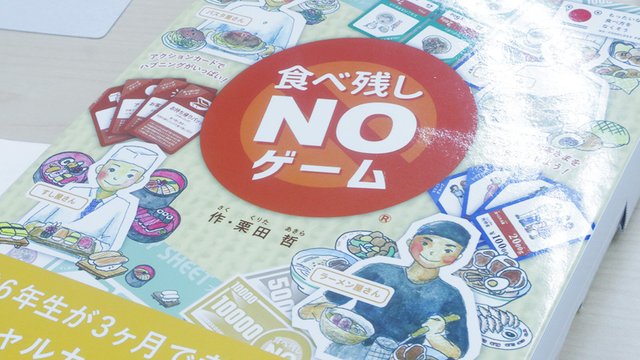
(Image: Roger Ong)
Every month in Osaka at the School of Future Value Creation (Phoenix School), a Tabenokoshi NO Game session is organised. This month’s session was particularly popular, with twice the usual number of participants. All have gathered, including me, to find out why a game created by an elementary school child is getting popular in Osaka.
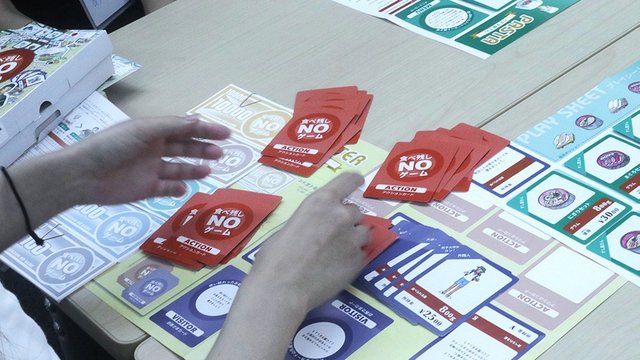
(Image: Roger Ong)
“Tabenokoshi NO Game” literally translates as “No Leftover Game”. Its rules are simple: you play as one of four owners of food establishments (including sushi master or ramen chef). Meet your customers’ needs and be rewarded in-game money. The player with the most money at the end of the game wins. Of course, being about “No Leftover”, there is a heavy penalty if you serve too much to the customer.
The creator who got inspired at his father’s restaurant
Tabenokoshi NO Game was created by Akira Kurita. With an interest to take over his father’s tonkatsu store, Akira discovered that there were a lot of leftovers. This was because customers tended to order more than they can eat. Subsequent research revealed the serious problem of food waste in Japan. That was when Akira learnt about the term “food loss”.

Tabenokoshi NO Game, created by Akira Kurita. (Image: Roger Ong)
At the same time, he was attending the Phoenix School, which focused on grooming creators (not limited to creative) and tackling social problems. It was also the same time that Akira received a class assignment to study a problem he was interested in. Within one week (no, it’s not a typo), he had the first prototype of the Tabenokoshi NO Game.
This is where Deep People entered the picture, the organisation in charge of Phoenix School. “Part of Deep People’s responsibility is matching solutions to resources, ie people with ideas to solve social problems and those who have the capabilities and resources. When we knew what Akira wanted to do, we reached out to people who could materialize Akira’s card game. The next three months were spent refining and producing what became the Tabenokoshi NO Game,” Haruna Nakao from Deep People shared with us.
“We also tested the game in Akira’s stead. We approached schools and businesses to test the game, and figure out who is the most interested in the game. Schools received the game really well, so much so teachers have been approaching us to ask how they could use the game to open a discussion about food loss in their classes.”
A fun and simple game that actually teaches how to prevent food loss
The best thing about the game is the concepts that are revealed during the game. At first, everyone was new to the game, so it was the learning phase. Subsequently, those who understood the game were helping their opponents, disregarding their winning chances. From different tables, I could hear participants calling out, “Hey! You should use the Takeaway card!” “Oh, the Allergies card! We can’t serve the food now.” “Poor Appetite? You’d want to keep dishes with small servings to prevent leftovers.”
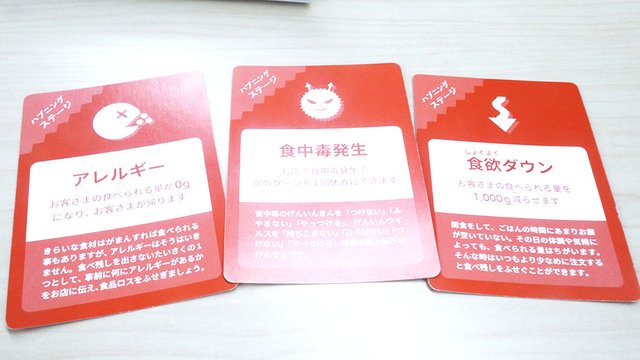
The game also introduces food-related concerns, like (from left) food allergies, food poisoning and loss of appetite. (Image: Roger Ong)
The level of interacting not only makes the session highly enjoyable. The available options in the game are also reflective of the options available in real life. There is constant reminder of not eating too much. If there is too much food, there’s the option to pack food for takeaways. Appetites changes from time to time, so we should look for alternatives instead of favorites. These simple concepts are easy to adopt, and consequently applicable and useful in reality.
Not just a game, but a system of education
The game is also designed to be long-term and sustainable. Beyond testing and revising the game to ensure its viability, Deep People is also creating a network of educators.
“We are getting more and more requests from schools about holding our game events in their schools. The requests don’t only come from within Osaka, but also neighboring prefectures. We’ll need more help!” shared Nakao.
So, in order to get more facilitators and game masters, Deep People offers official certification. These are one-time paid membership that recognizes these personnel as the authority in the game. They are added to a network, where they will get the opportunity to teach the game in games or companies.
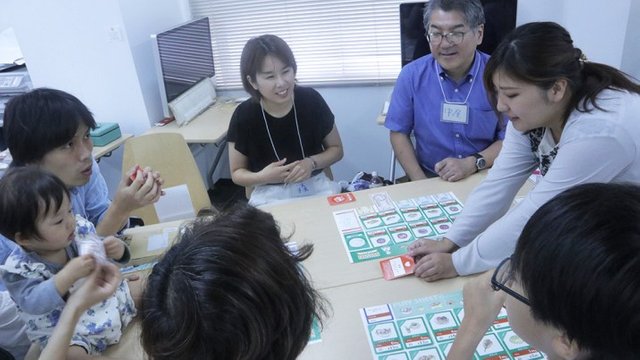
A game master teaching the game to participants who have never played it before. (Image: Roger Ong)
Therefore, there is a method to bring the game to the masses. Deep People did not set out to create a game and market it for exposure. Instead, they understand the need to scale a working solution, thus creating a sustainable system.
Tabenokoshi NO Game is a solution-based design for society
As you have seen, that this game is not just a fun game with a lesson behind it. The Tabenokoshi NO Game is really a solution-based design to a problem: food loss.
Japan saw a waste of over 27 million tons of food in 2016. Of that, over 6 million tons were still considered fit for consumption. This is in face of a dire poverty problem in Japan. (Did you know that 1 in every 6 children is living in poverty in Japan?) While policies are in effect to deal with societal and business norms, Deep People believes in education. In particular, children’s education.
“Japan’s overly strict rules can lead to food loss. However, a shift in consuming food is important too. But adults’ mindsets can be difficult to change. Therefore, we need to teach children to care about food loss, just like we do with recycling,” shared Nakao.
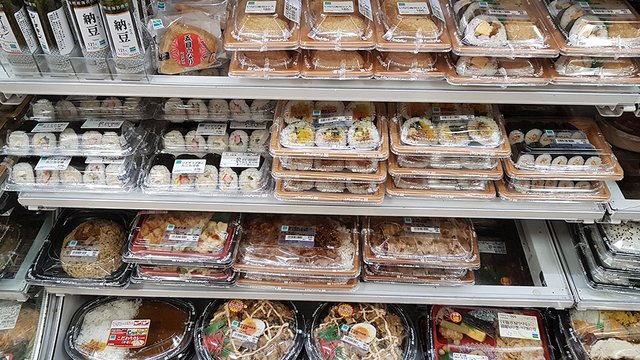
For example, unsold food in convenience store are discarded way before expiry dates. (Image: Roger Ong)
Indeed, in the game for example, they learn the differences between Best Before Date and Expiry Date. They also learn not to order more food than they need. This is the kind of education for responsible consumption that will become a norm for future generations.
Future generations solving future problems
Nakao also gave us a glimpse of the future, “Hopefully food loss will be dealt with in the next 10 years. We would like to tackle other social problems after that. We know that education through fun works, so we’ll use the same working system to create awareness for other social problems.”
With that as another tool available, especially for use towards the sustainable development goals, there is a touching realization. If adults like us are unable to create a better future for our children, then children will take things into their own hands. There is truly hope, where future generations are creating a better future for themselves.
[Website] Tabenokoshi NO Game
[Website] Deep People
(This interview was originally published on Zenbird Media.)
Additional Resources
Zenbird Media Homepage
More on Food Waste
More on Designing for Good
Congratulations, your post has been selected to be included in my weekly Sustainability Curation Digest for the Minnow Support Project.